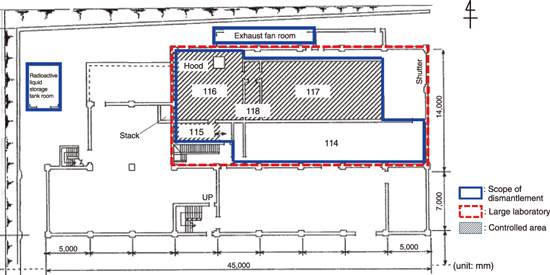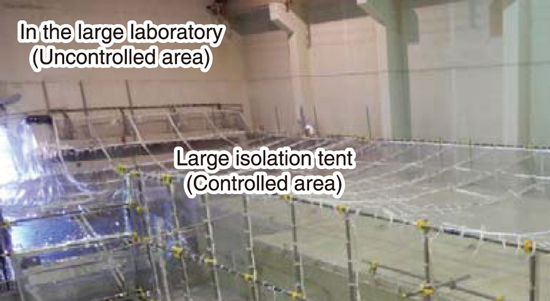
Fig.8-14 Floor plan of the first floor of the Uranium Enrichment Laboratory

Fig.8-15 Installation of a large isolation tent

Fig.8-16 Overview of the large laboratory before and after decommissioning
The Uranium Enrichment Laboratory in the Nuclear Science Research Institute was constructed in 1972 and was used for research on uranium enrichment program until 1998. Thereafter, maintenance work was conducted by dismounting the equipment whose use had been completed. In accordance with the facility mid/long-range plan, we completed the decommissioning program for dismantling and decontaminating the facilities and released the controlled area in 2019. In this facility, an independent steel-framed room was set up in an atrium room (about 420 m2), and this room was called a large laboratory in an uncontrolled area, and a part of it was used as the controlled area (about 182 m2). The floor plan is shown in Fig.8-14.
At this facility, an incipient fire trouble occurred in 1989, and a fire disaster occurred in 1997, causing uranium contamination throughout the controlled area. In the preliminary investigation of decommissioning, the residual contamination at that time was also confirmed at the boundary between the floor and wall. In this work, the walls and ceilings that divide the contaminated controlled area were completely dismantled. For achieving this purpose, it was necessary to completely prevent the contamination from leaking from the controlled area to the uncontrolled area during the equipment-dismounting work. The large isolation tent (Fig.8-15) that covered the entire room was dismounted, and the rooms in the controlled area were carefully demolished. To prevent the scattering of contamination, an adhesive sheet was fixed to the floor surface in the contaminated area, and subsequently, the floor material was peeled off. The concrete surface where the contamination remained was removed by installing a partial isolation tent at each work site and using a power tool with a dust collecting function.
In the decommissioning of this facility, in addition to dismantling the room, the facilities inside and outside the controlled area (i.e., hood, nuclear fuel storage, etc.) were dismantled and removed.
The work toward the decommissioning of the Uranium Enrichment Laboratory was conducted based on safety considerations, such as contamination spread prevention measures and fire prevention measures, and the controlled area was released without any disaster in FY2019 as planned (Fig.8-16). The building after releasing the controlled area is being used as a general facility. We believe that the knowledge gained from the decommissioning of this facility will be useful for the safe decommissioning of facilities that are difficult to decontaminate because of the remaining contamination.
(Junya Kokusen)